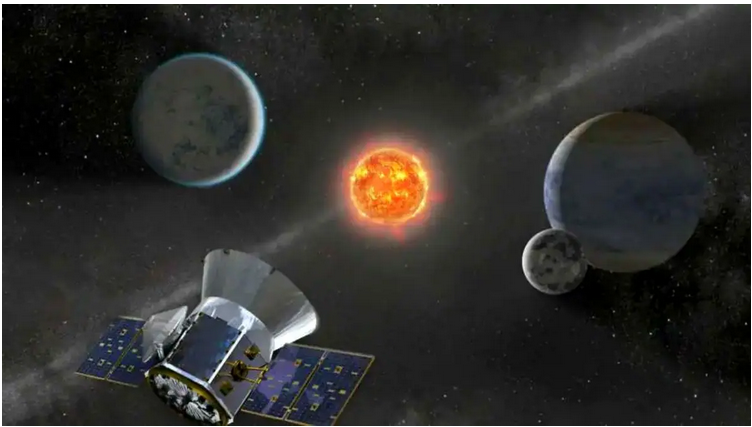Two of them are the size of Earth...Scientists discover a multi-planet system 33 light-years away
Astronomers at the Massachusetts Institute of Technology have discovered a new multi-planet system within our neighboring galaxy located 10 parsecs, or about 33 light-years, from Earth; This makes it one of the closest known multiple planetary systems to our own.
At the heart of the system is a small, cool dwarf star called HD 260655, which astronomers have found hosts at least two Earth-sized planets.
However, the planets are likely to be uninhabitable; Because their orbits are relatively narrow; This exposes planets to temperatures too high to tolerate liquid surface water, said the MIT astronomers who made the discovery.
The inner planet orbits its star every 2.8 Earth days and is about 1.2 times the size of Earth and twice its mass. The other rotates every 5.7 Earth days and is 1.5 times the size of Earth and three times its mass. Both have been described as "rocky".
The new planetary system was initially identified by NASA's Transiting Exoplanet Survey Satellite (TESS), a mission led by the Massachusetts Institute of Technology designed to observe the nearest and brightest stars, and detect periodic dips in light that could indicate a passing planet.
In October 2021, she was Michelle Kunimoto; A member of the TESS science team at MIT, she monitored incoming satellite data when she observed a periodic starlight dip, or transit, from the star HD 260655.
It ran the finds through the mission's scientific inspection pipeline, and the signals were soon classified as TESS Objects of Interest, or TOIs, which are objects that have been flagged as possible planets.
The same signals were also found independently by the Scientific Processing Operations Center (SPOC), the official TESS planet research pipeline based at NASA Ames. Scientists usually plan to follow up with other telescopes to confirm that the objects are indeed planets.
The process of classifying and confirming new planets often takes several years. For HD 260655, this process has been greatly reduced with the help of archival data.
Soon after Kunimoto identified potential planets around HD 260655, astronomer Schporer considered; To see if the star has been observed before by other telescopes.
Fortunately, HD 260655 was included in a survey of stars conducted by the High Resolution Echelon Spectrograph (HIRES), an instrument operating as part of the Keck Observatory in Hawaii.
HIRES has been observing the star, along with a host of other stars, since 1998, and researchers have had access to publicly available survey data.
HD 260655 is also included as part of another independent survey by CARMENES, an instrument operating as part of the Calar Alto Observatory in Spain. Because this data was private, the team reached out to members of both HIRES and CARMENES; With the aim of combining the power of their data.
On this occasion, Michelle Kunimoto said; A postdoc at the Kavli Institute for Astrophysics and Space Research and one of the lead scientists on the discovery: "Both planets in this system are among the best targets for studying the atmosphere because of the brightness of their star."
"Is there a rich volatile atmosphere around these planets?" she asked. Are there signs of water or carbon-based species? These planets are great testing grounds for these explorations.”
The team is scheduled to present its discovery at the American Astronomical Society meeting in Pasadena, California.
Team members at MIT include Katherine Hess, George Rieker, Sarah Seeger, Avi Schbourer, Roland Vandersbeek, and Joel Villasen, as well as research collaborators from several other institutions around the world.
https://www.arageek.com/news/scientists-find-multiplanet-system-that-hosts-two-earth-type-planets-just-33-light-years-away?fbclid=IwAR09FadQm2zZ-VrNvVaCF9zucA4gc0_yCCdLXfJv6-RGzOHfGjmFL-bgGDQ


